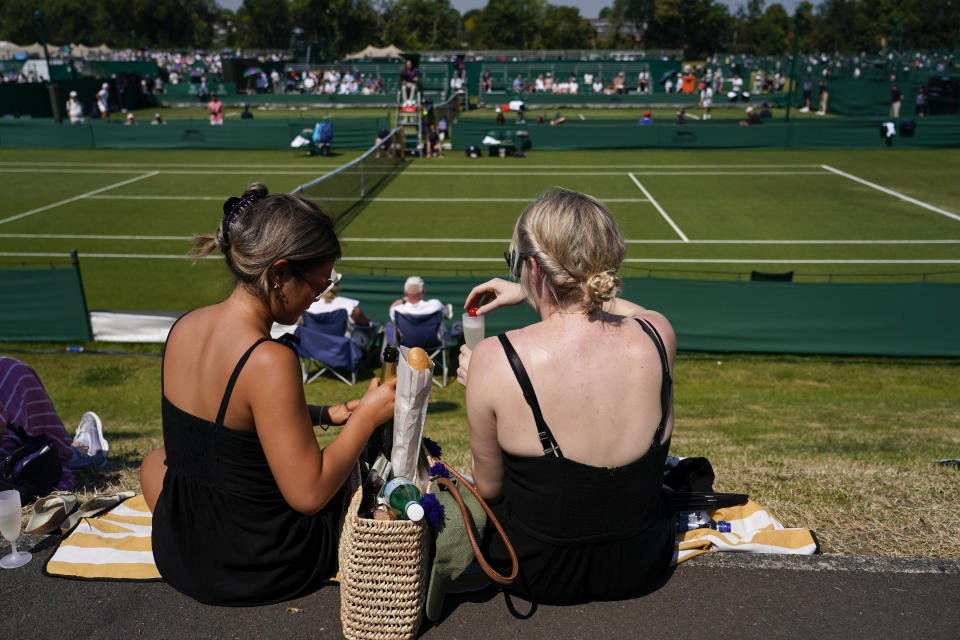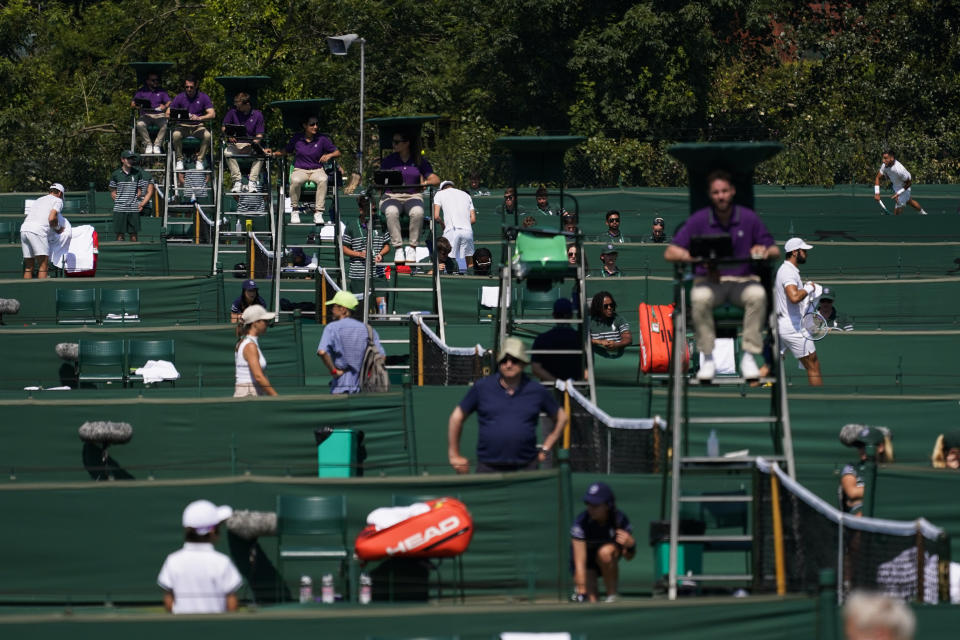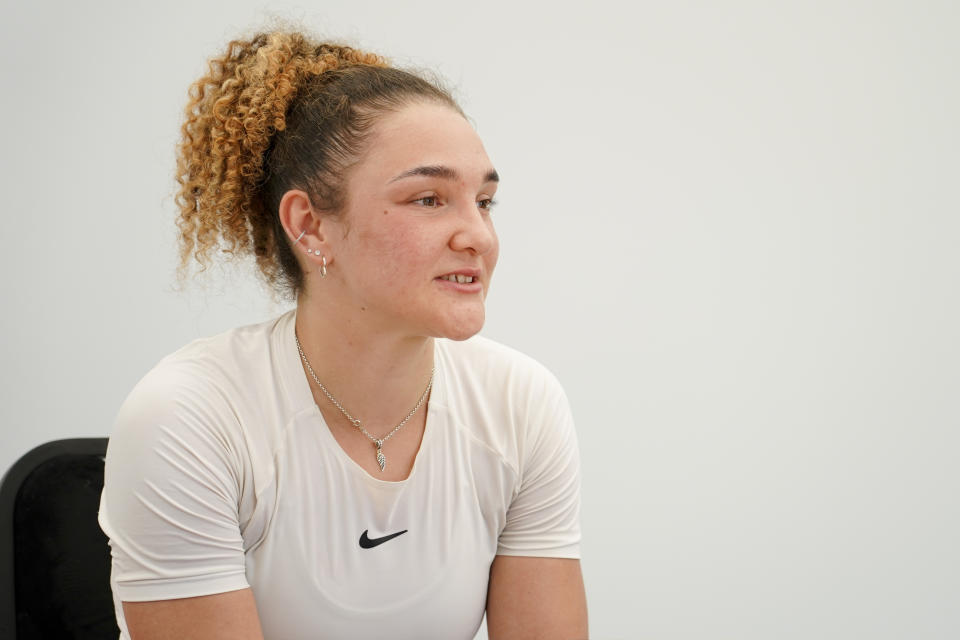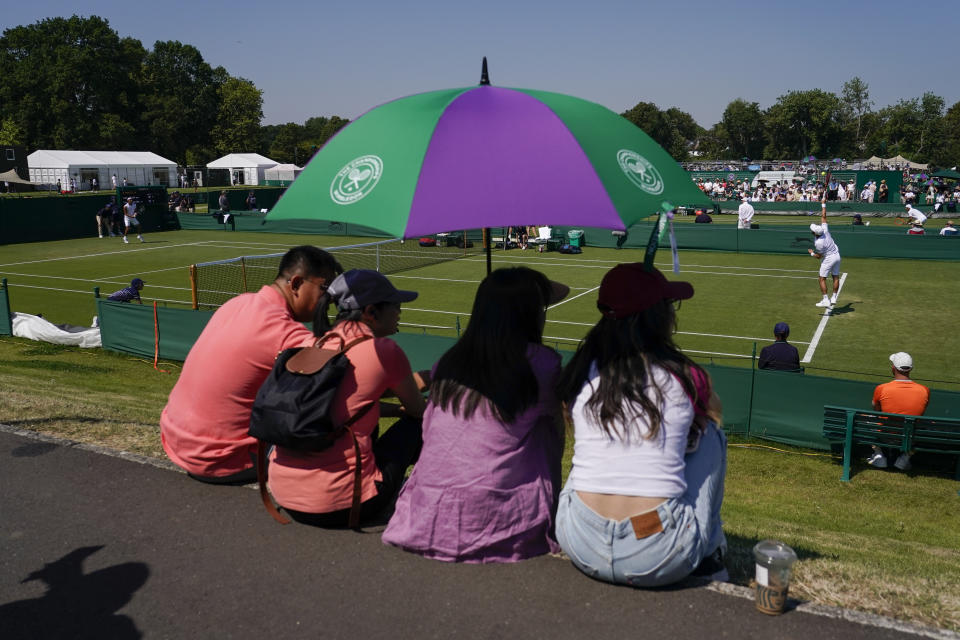Wimbledon's qualifying rounds are the tournament before the tournament
ROEHAMPTON, England (AP) — About 3 miles (5 kilometers) from the All England Club — a 15-to-20-minute drive during moderate mid-morning traffic, along tree-lined roads — sits the Roehampton Community Sports Centre, site of this week's qualifying rounds that let lower-ranked players earn their way into the Wimbledon brackets.
It’s the tournament before the tournament, mostly contested by athletes who fall into one of two categories: someone older who “used to be such-and-such” and seeks a return to past glory or someone younger who ”hopes to be this-or-that” and seeks career-altering success. It's also the only Grand Slam qualifying event held at a smaller, more quaint, location away from the real deal, although that could change in the coming years. For now, Roehampton's grass courts are the same as those at the All England Club, where competition begins Monday. So is the rule requiring white attire. The tennis is similar, too.
The biggest difference? “The paychecks,” American player Kayla Day said with a laugh. By making the second round of what is commonly called “quallies,” she made 25,000 pounds, which is worth about $31,000 — less than half of what a first-round exit at Wimbledon earns and nowhere near the 2.7 million pounds, almost $3.5 million, paid to the singles champions.
The real reward for the 16 women and 16 men who successfully navigated the three rounds at Roehampton arrived Friday, when their names were in the draw held for Wimbledon proper, meaning those who qualified will participate at the oldest major championship in the sport. That, of course, often can be a one-and-done outing. One example: Vit Kopriva, a 27-year-old from the Czech Republic with an 0-1 record in Grand Slam matches, goes from qualifying to a first-round berth against 24-time major champion Novak Djokovic.
“It’s better to be in the main draw. It’s more prestigious. It’s another thing. Here, of course, it’s nice, but it’s nothing compared to (playing) there. I imagine when you qualify, it’s incredible to move (on) and to go there,” said Richard Gasquet, a two-time semifinalist at Wimbledon who was ranked No. 7 more than 15 years ago but now, at age 38, is down at No. 126.
The setting and atmosphere for Wimbledon qualifying
The setting and atmosphere are a far cry from the 15,000-capacity Centre Court.
As Gasquet played Wednesday at Roehampton's main court, with its fewer than 800 green chairs, there were gasps at the Frenchman’s smooth one-handed backhand and shouts of “Allez, Richard!” Not far away, spectators watched the action on a smaller court from an adjacent grassy hill while grabbing food out of picnic baskets.
“My seats for Wimbledon are in the heavens. Here you see it from much closer,” said Rosie Sopp, a 32-year-old who works in public relations in London and joined a friend in sipping bubbly while catching some tennis. “I like how much more intimate it is. And it's an opportunity to see players who could be big in two or three or five years. Or even a year from now. You can either see the up-and-comers or someone like Gasquet, who 10 years ago you never could have watched up-close.”
In Roehampton, where tickets sold ahead of time were 15 pounds each — less than $20 — everything is up-close.
“Many people will tell you," said Sally Bolton, CEO of the All England Club, "this is still the best-kept secret in tennis in London.”
Maybe it's no longer that much of a secret: This year's total four-day attendance of 13,898 was a record. Bolton is proud of the improvements made to Roehampton since the Club began running it via a year-round lease, changes Gasquet and other players praised, but the plan is to eventually build dozens of new courts across the street from the main Wimbledon site and hold qualifying there.
Back at Wimbledon qualifying 20 years later ... or brand new
Because Gasquet's ranking is no longer good enough to access the main draw, he needed to try to qualify — something he last attempted in 2004. He won two matches this week, then lost his third.
“It’s strange for me to come back here, but I’m happy to be here,” Gasquet said. “Physically, it can be tough, sometimes, but I still enjoy it. Of course, I will retire soon; I don’t know exactly when.”
At the opposite end of the spectrum is Amarni Banks, a British player with a career-best ranking of No. 250 whose biographical page on the WTA Tour website does not include a photo, an age (21) or where she was born (Manchester).
Banks received a wild-card invitation for qualifying from the All England Club and made a bit of a run in Roehampton, eliminating Kristina Mladenovic — twice a Grand Slam quarterfinalist in singles and the owner of six Grand Slam titles in women’s doubles — and the 26th-seeded Day, before, like Gasquet, bowing out with a loss on Thursday.
“I started when I was 4 years old, and the dream’s always been to win a Slam. At least one,” Banks said after her first-round victory over Mladenovic. “So when you get to this level, it’s kind of like, ‘Wow! I’m here!’”
Wimbledon is ‘the temple of tennis’
The truth is, though, this is not necessarily the “here” everyone in Roehampton was aspiring to.
“Wimbledon is Wimbledon. It’s the temple of tennis,” said 33-year-old Belgian David Goffin, who like Gasquet has been all the way up at No. 7 but couldn't get into Wimbledon with his current ranking, which slid because of a 3-9 start to the season.
“It’s not really good to compare with the past and try to have what I had in the past or what I didn’t have in the past,” said Goffin, who lost Thursday. “It’s not really good for my head.”
Goffin, Gasquet and others who failed to qualify still can hold out hope that a player in the Wimbledon field will withdraw because of injury or another reason, opening up a place for what is known as a “lucky loser.”
The stress of Grand Slam qualifying
Some say the amount of stress is greater in qualifying — a system also used at week-in, week-out events on tour — because of what’s at stake.
The win-and-in setup can weigh on players.
“It’s a really big grind to go through the ‘quallies.’ Everyone wants to be in the main draw,” said Amanda Anisimova, a 22-year-old American who reached the French Open semifinals at age 17 and lost at Roehampton on Thursday.
“I actually find it quite tense," she said, “because I think everybody here is really focused on making it through.”
___
Howard Fendrich has been the AP’s tennis writer since 2002. Find his stories here: https://apnews.com/author/howard-fendrich
___
AP tennis: https://apnews.com/hub/tennis







